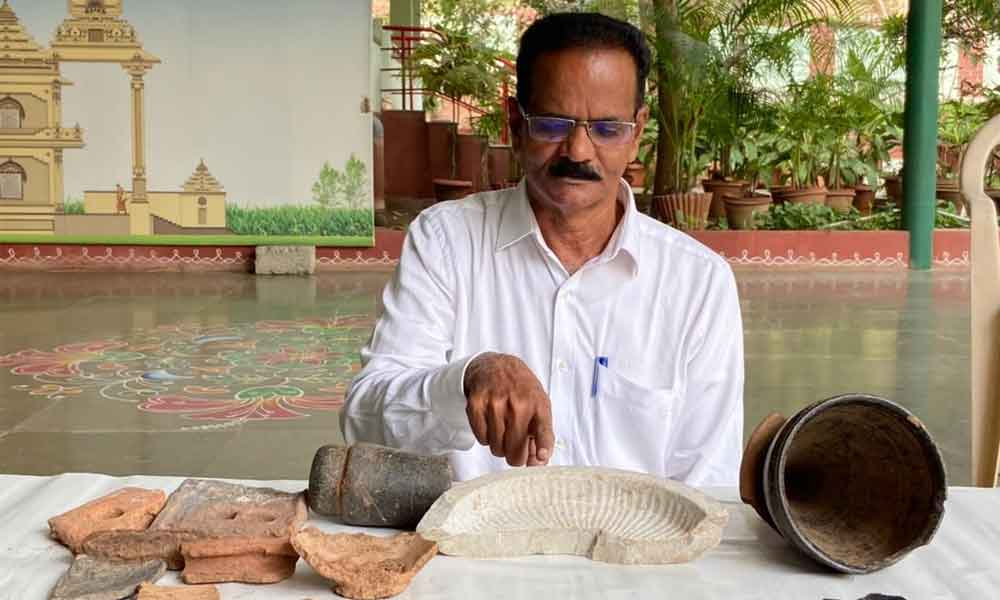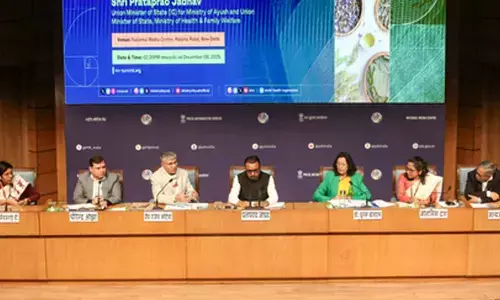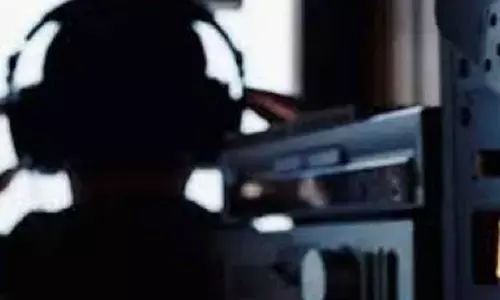1st century BC Buddhist remains found in Guntur

E Sivanagi Reddy, historian
The artefacts surfaced while digging for the foundation of Bhavagni Ashram in Tulluru mandal
Vijayawada: Buddhist remains belonging to 1st century BC have been surfaced while digging the foundation for Bhavagni Ashram at Vaikunthapuram in Tulluru mandal of Guntur district.
Based on the information provided by the Ashram officials, Dr E Sivanagireddy, Buddhist Archaeologist and CEO of Cultural Centre of Vijayawada and Amaravati visited on Monday and examined the remains. He noticed a conical cup of ball polished ware inserted into a red ware stand of the iron age (1000 BC), pit shreds of redware, terracotta tiles once covered the roofs of the Buddhist viharas, a well-polished black granite muller and a broken Chatra (parasol) that enshrined a Sthupa of the Satavahana period.
Dr Reddy surprised on locating a Brahmi inscription reading 'Pusana (danam)' meaning that the Chatra was donated by one household Pusana. He said that it was confirmed by Dr K Muniratnam Reddy, Director, Epigraphy Branch, Archaeological Survey of India that the script belongs to 1st century BC which is in Prakrit language.
He added that the Ashram officials told him that the remains will be displayed in the proposed museum in the Vyasabhagavan temple now under construction. Buddhist remains at Vaikunthapuram were originally reported by the then British Archaeologists 125 years ago. Dr Sivanagireddy revisited the remains in 2016. Dr Reddy informed the Ashram on the archaeological importance of the finds and appealed them to safeguard them until they are displayed in the new building coming up shortly.














